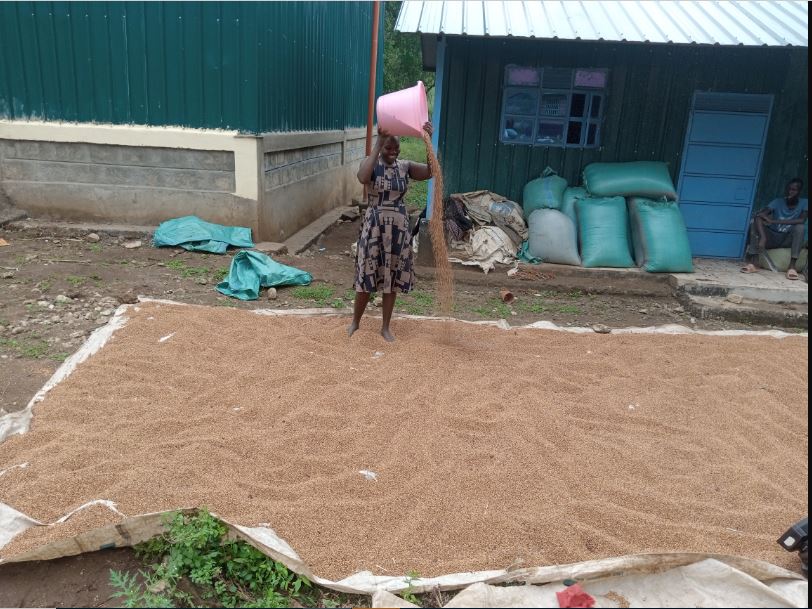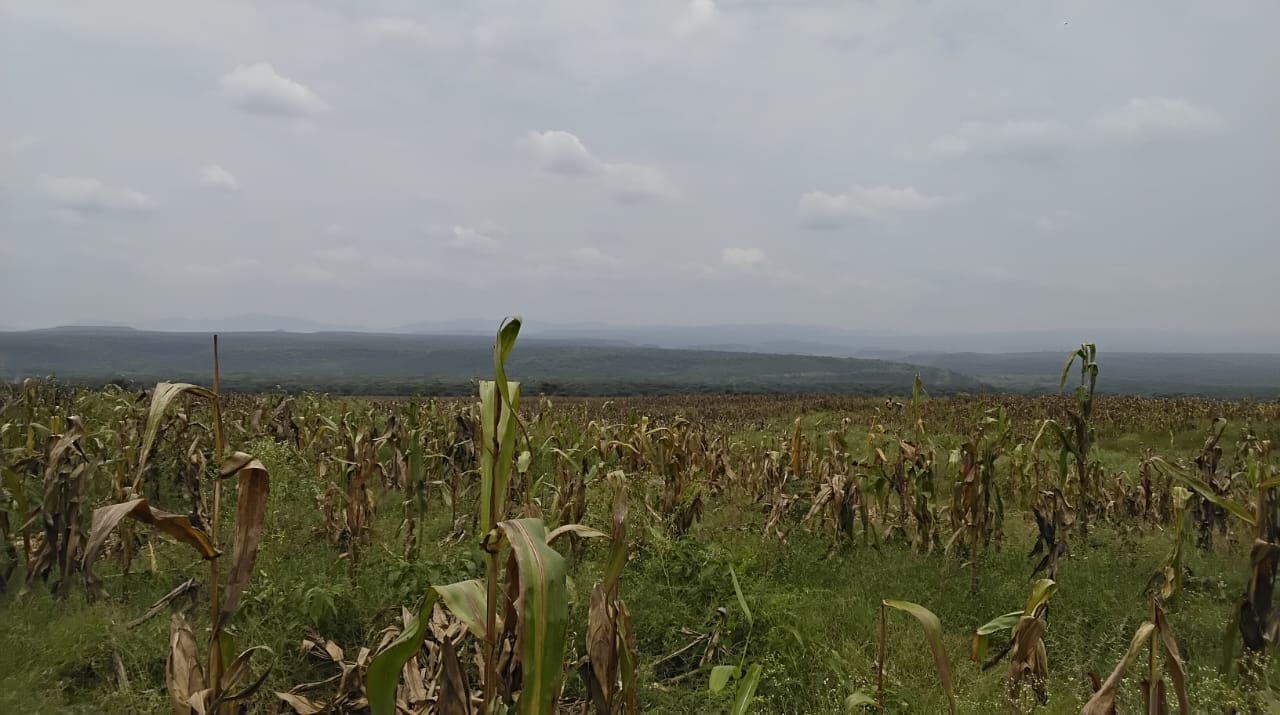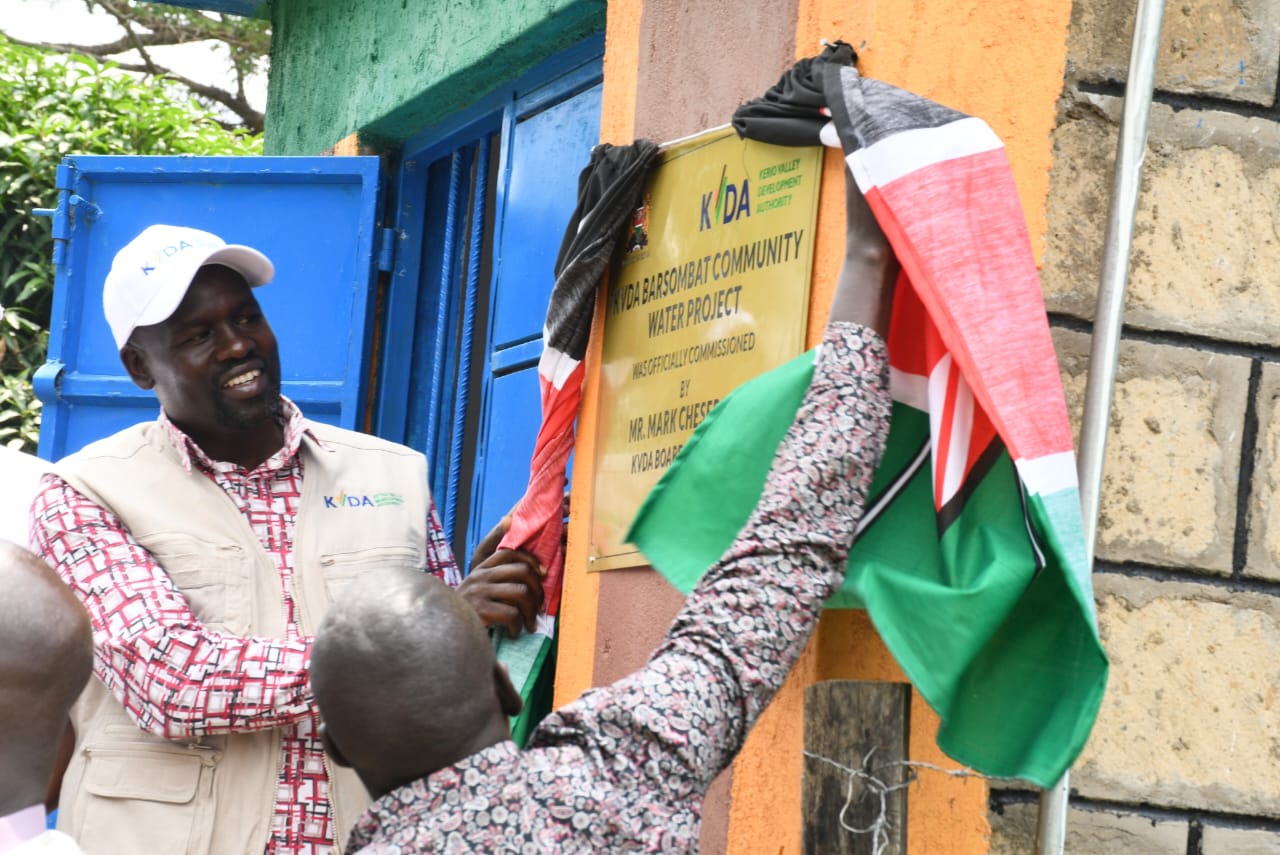
Governors plan to rebuild Kerio Valley after banditry menace
Banditry, they say, has caused development activities to stall in affected counties.
The face of Kerio Valley is changing, its future will be written in the furrows of its fertile soil
In Summary

Audio By Vocalize
 Sophie Kipruto, a farmer from the Kamsiwet Irrigation Scheme, aerating her sorghum outside the cereal store built by KVDA./KNA
Sophie Kipruto, a farmer from the Kamsiwet Irrigation Scheme, aerating her sorghum outside the cereal store built by KVDA./KNA
Just two years ago, the Kerio Valley was synonymous with insecurity, cattle rustling, and displacement.
Today, the valley is witnessing a dramatic transformation as lush green fields of sorghum and maize stretch across the once-volatile landscape.
The turnaround has been driven by peace, irrigation, and structured agribusiness, giving residents new hope and prosperity.
For decades, the valley’s fertile soils lay underutilised as persistent conflict kept families from farming.
But with relative calm restored, farmers, supported by the Kerio Valley Development Authority (KVDA) and the County Government of Elgeyo Marakwet, are replacing bullets with hoes and cattle raids with profitable farming.
At the Kamsiwet Irrigation Scheme in Marakwet West, a once-idle 150-hectare farm has roared back to life.
 Partially harvested maize at the Chepkum Irrigation Scheme./KNA
Partially harvested maize at the Chepkum Irrigation Scheme./KNA
“This land lay idle for years because of a lack of peace, but we farmers decided to revive it,” said Paul Cherop, Chairman of the Kamsiwet Cooperative Investment Scheme.
“With KVDA’s support in water projects, we have had bountiful harvests. Last year alone, we sold sorghum worth over Sh13 million. For the first time, our children are in school without the worry of fees, and no household here lacks food.”
Cherop urged the government to expand irrigation to neighbouring Baringo and West Pokot, arguing that tackling hunger will eliminate cattle rustling.
“Cattle rustling begins with hunger. If we deal with that, all will be sorted,” he said.
For women, farming has become both a lifeline and a source of dignity. Jennifer Kibet, who relocated from Lagam, recalls her struggles before joining the scheme.
“My children are now in secondary school and university because of the income I earn here. I live in peace with my husband, we can pay for health cover, and we no longer live from hand to mouth. Farming has restored our dignity,” she said.
Jennifer believes increased funding for KVDA would allow more youth and women to join.
“If young men and women embrace farming, they will not have time to engage in crime or take what others have worked hard for,” she added.
 KVDA Chairman Mark Chesergon commissioning the Barosombat community water project./KNA
KVDA Chairman Mark Chesergon commissioning the Barosombat community water project./KNA
“From the sheller, I earn about Sh6,000 daily. Half goes into fuel and maintenance, while the rest pays my school fees and upkeep,” he said.
“The scheme has changed my life, but we need more shellers to reduce post-harvest losses. The government should support youth groups with equipment to scale agribusiness.”
The benefits of irrigation have gone beyond incomes. Schools now have steady food supplies, reducing hunger-related absenteeism.
“As a teacher and farmer, I have seen how the farm has improved both education and nutrition,” said Evans Chelang’a, a secondary school teacher.
“The farm provides food for children, and teachers can also supplement their income through farming. Security has improved too, because people are busy on their farms.”
KVDA Managing Director Sammy Naporos confirmed the shift.
“Kamsiwet alone has over 350 beneficiaries. This season, farmers harvested 350 tonnes of sorghum worth about Sh25 million. In two seasons, nearly Sh50 million has been injected into the local economy,” he said.
He added that government investment of Sh17 million in water infrastructure has paid off, with farmers benefiting from contract farming agreements with Kenya Breweries and Kenya Seed Company.
“Through farming, people can pay school fees, access healthcare, and register for insurance. This is the real meaning of socio-economic development,” Naporos said, noting that Kamsiwet now supports 1,000 households.
KVDA is replicating Kamsiwet’s success elsewhere. At the Chepkum Irrigation Scheme, 300 acres of farmland are now under food production following rehabilitation of water storage and distribution systems.
Farmers there are harvesting about 300 tonnes of maize worth Sh12 million per season, supporting 1,800 households.
To tackle post-harvest losses, KVDA has built a modern cereal store, replacing temporary tents previously used by farmers. “Now, with the store, produce is safe and collection is easier,” said Naporos.
The authority is also upgrading the Tot Mango Factory into a fully automated plant. Once complete, it will process more mangoes from local farmers, significantly boosting their incomes.
COMMITMENT FROM LEADERSHIP
KVDA Chairman Mark Chesergon reiterated the authority’s long-term commitment: “We are prioritising water utilisation for agricultural benefits. Today, we commissioned the Barosombat borehole and inspected Chepkum and Kamsiwet irrigation schemes. These projects are about securing food and livelihoods for the next 100 years.”
Elgeyo Marakwet CECM for Agriculture Edwin Kibor echoed the sentiment, stressing the county’s role in providing extension services and market linkages.
“Our wealth creation programme is bearing fruit. Farmers here are supplying sorghum to EABL and seeds to KALRO. This is not just about now, but about future food security,” he said.
Local leaders agree the region is on a new path. Justin Mutwol, MCA for Arror Ward, reflected on the dramatic change: “This farm used to be a battlefield. Today, it is an economic hub. We thank KVDA and the government for reviving the schemes and giving people a reason to choose farming over conflict.”
At Kamsiwet, neat rows of sorghum shimmer under the Kerio sun, children laugh on their way home from school, and farmers count their harvests with pride. Where the sound of gunfire once echoed, the hum of shellers and tractors now fills the air.
The face of Kerio Valley is indeed changing, and its future may be written in the furrows of its fertile soil.

Banditry, they say, has caused development activities to stall in affected counties.